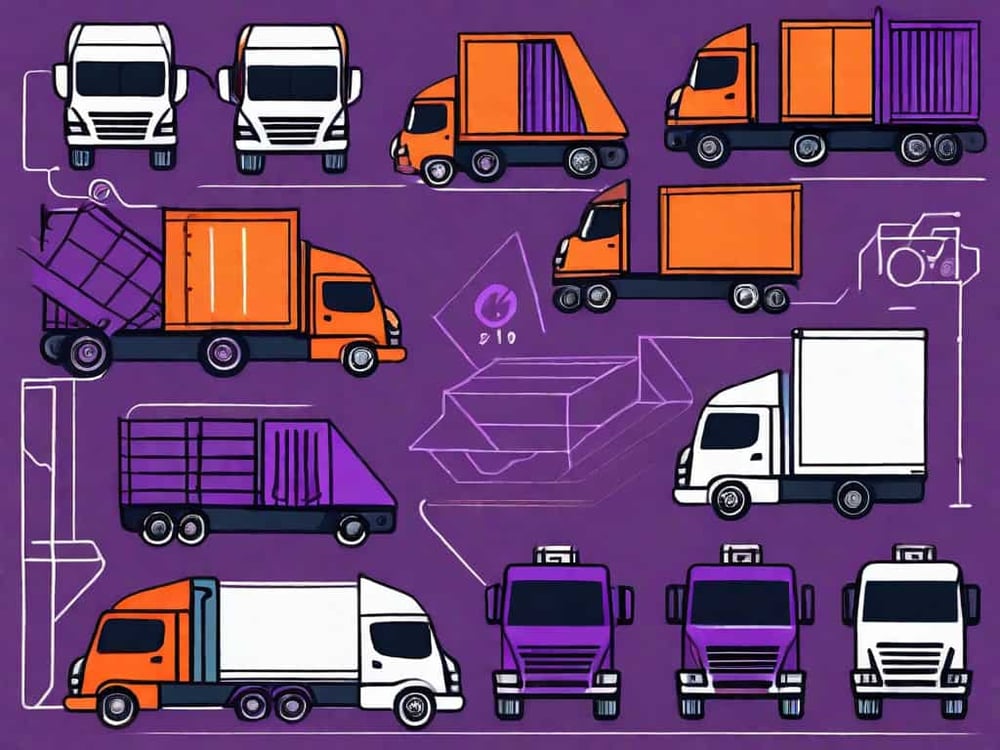Did you know that using a checklist when negotiating a 3PL contract can help businesses reduce fulfillment costs by up to 20%?
Using a checklist for 3PL contract negotiation can help you ensure that all critical aspects are covered. This custom checklist provides a clear guide to evaluating 3PL providers, ensuring no key details are overlooked.
Table of Contents
Table of Contents
ToggleThe Only 3PL Contract Checklist You’ll Ever Need
A 3PL audit checklist is a comprehensive tool used to ensure that all critical elements are addressed when negotiating or drafting a contract with a third-party logistics provider. This checklist typically includes essential items such as:
- Statement of Work (SOW): Defines the services to be provided by the 3PL, including warehousing, transportation, and order fulfillment.
- Service Level Agreements (SLAs): A service level agreement outlines performance metrics and expectations, including order accuracy and shipping times.
- Pricing and Payment Terms: Details the costs associated with services and the payment schedule.
- Contract Duration: Specifies the length of the agreement and conditions for renewal or termination.
- Liability and Insurance: Clarifies the responsibilities of each party in terms of insurance coverage and liability.
- Confidentiality Clauses: Protects confidential materials and any other information shared during the partnership.
- Dispute Resolution Procedures: Establishes the method of settling legal disputes, whether through arbitration or legal action.
This comprehensive checklist simplifies your negotiations, helping you save time and ensure no crucial details are missed.
Download the checklist and get through the third party logistics contract negotiation process easily.
GET YOUR 3PL CONTRACT CHECKLIST
How Do I Negotiate a 3PL Contract Effectively? 8 KEY Things to Pay Attention to
To negotiate a 3PL agreement effectively, first and foremost, get your checklist ready. Then identify your business needs and set clear expectations for the partnership.
When it comes to identifying your business needs, it goes beyond just the basic logistics service. Take the time to delve deeper and identify any specific requirements or challenges that your business faces. Here’s what you need to do:
- Do Your Research: Understand the market rates, service offerings, and capabilities of potential providers. This knowledge will help you identify competitive pricing and services.
- Define Your Requirements: Clearly outline your logistics needs, including order volume, types of services required, and specific performance metrics. Knowing your business’s needs will guide the negotiation process.
- Request Detailed Proposals: Ask for itemized quotes from multiple providers. This allows you to compare costs, services, and terms comprehensively.
- Focus on Service Level Agreements (SLAs): Negotiate clear SLAs that outline performance expectations, such as order accuracy and delivery times. Ensure there are penalties for not meeting these standards.
- Be Transparent About Your Budget: Share your budget constraints with the provider. This transparency can foster a collaborative relationship and encourage them to propose cost-effective solutions.
- Discuss Flexibility: Ensure the contract allows for scalability and flexibility to accommodate changes in your business needs, such as fluctuations in order volume or service expansion.
- Negotiate Payment Terms: Clarify payment structures and negotiate terms that align with your cash flow. Consider options for volume discounts or fixed pricing for stability.
- Review Legal Terms Thoroughly: Involve your legal team to examine the contract, focusing on liability clauses, termination conditions, and confidentiality agreements to protect your interests.
Essential Components of a 3PL Contract
Now, let’s explore the essential components that should be included in your agreement:
3PL Statement of Work (SOW)
The statement of work (SOW) summarizes all commitments made by the vendor during the sales process. It outlines the services you and the 3PL are contracting for and should align with other contract sections, such as service standards and pricing.
Key services that may be included in the SOW:
- Advance shipping notices (ASNs)
- Inventory management and storage
- Transportation services
- Order fulfillment for e-commerce
- Retail replenishment orders
- Outbound shipping
- IT services, including EDI and reporting
- Returns processing
- Kitting and assembly
The level of detail in the SOW should be determined based on your company’s needs in consultation with your legal advisor.
3PL Implementation Scheduling
Incorporate a comprehensive project schedule for onboarding at distribution centers. Key considerations include:
- Is the implementation plan detailed enough to instill confidence?
- Clearly outline responsibilities for both the client and the provider.
- Identify go-live dates for inbound products and shipping for initial customer orders.
Terms and Pricing
Most agreements last for three years or more, which can provide stability for both parties. A long-term mutual agreement helps avoid the costs and disruptions associated with frequent relocations. Consider including optional renewal terms for one or two years after the initial period.
Typically, service prices are guaranteed for a 12-month period, followed by an annual cost escalation based on a set percentage or the Consumer Price Index (CPI). A well-drafted contract should clearly outline when and how these price increases may occur.
3PL Service Level Agreements (SLAs)
Clearly define the SLAs in your contract, keeping in mind that overly stringent standards may raise costs. Consider implementing penalties for failure to meet these standards.
Key performance metrics might include:
- Order fulfillment cut-off times
- Return processing efficiency
- Shipping times for international orders
- Error rates in order fulfillment
- Inventory shrinkage allowances
Establish regular management meetings to review SLAs and maintain high service levels.
Procedures for Value-Added Services
If certain procedures are crucial for delivering expected customer service, attach them to the agreement. Common procedures may include:
- Standards for the appearance of shipping boxes
- Ensuring cleanliness of inventory before packing
- Detailed instructions for kitting projects
Legal Clauses and Renewals
Your agreement should clearly outline the conditions under which the parties involved can terminate the agreement. Performance metrics, error rates, and service levels should be included as grounds for termination.
Many legal documents have automatic renewal clauses, where the contract renews unless notice of termination is provided within a specified timeframe, typically 60 to 90 days before expiration.
Bonus Tips for Successful Negotiation
Successful negotiation is the key to establishing a mutually beneficial 3PL partnership. Here are some tips to keep in mind:
Importance of Open Communication
Effective communication is the foundation of any successful negotiation. Clearly articulate your needs and concerns, regarding the services provided by the 3PL business. Encourage open dialogue, active listening, and transparency throughout the negotiation process.
The Role of Compromise in Negotiation
Negotiation often involves compromise. Understand that both parties have their own objectives and constraints. Be willing to find a middle ground and explore creative solutions that address the needs of both parties.
Remember – The goal is to establish a mutually beneficial long-term partnership.
Post-Negotiation Steps
Once the negotiation is complete and the contract is signed, there are crucial post-negotiation steps that you should take:
1. Regular Review and Audit of the Contract
Regularly review the contract to ensure ongoing compliance with the agreed-upon terms and conditions. Conduct periodic audits to assess the provider’s performance and identify areas for improvement or renegotiation.
2. Managing and Maintaining the Relationship
Building a strong relationship with your provider is essential for long-term success. Maintain open lines of communication, provide feedback, and collaborate on continuous improvement initiatives.
Regularly assess the provider’s performance and address any issues or concerns promptly.
What Are The Common Pitfalls to Avoid When Entering Into a 3PL Contract?
When entering into an agreement, it’s crucial to avoid common pitfalls that can lead to misunderstandings and complications. Here are some key pitfalls to watch out for:
- Vague SLAs: Failing to clearly define performance metrics can result in unmet expectations. Ensure that SLAs specify order accuracy, shipping times, and other key performance indicators.
- Neglecting Cost Transparency: Not fully understanding the pricing structure can lead to unexpected costs. Request detailed quotes and clarify any potential hidden fees before signing.
- Ignoring Flexibility: Overlooking the need for flexibility in the contract can hinder your ability to adapt to changes in demand. Include terms that allow for scalability and adjustments as your business evolves.
- Insufficient Termination Clauses: Not specifying termination conditions can create difficulties if the partnership needs to end. Ensure the contract outlines the circumstances under which either party can terminate the agreement.
- Lack of Regular Communication: Failing to establish ongoing communication can lead to issues going unnoticed. Set up regular meetings to discuss performance and address any concerns promptly.
- Not Involving Legal Expertise: Entering into a contract without legal review can expose your business to risks. Always consult with a legal professional to ensure the agreement protects your interests.
- Underestimating the Importance of Data Security: Neglecting to include data security measures can leave your business vulnerable. Ensure confidentiality clauses are in place to protect sensitive information.
- Overlooking Inventory Management Policies: Not addressing how inventory will be managed can result in discrepancies. Clearly define responsibilities for inventory handling and accuracy.
Get Our Checklist and Start Negotiating Your Next 3PL Contract
By following this comprehensive checklist, you can establish a solid foundation for a mutually beneficial partnership with your chosen 3PL service provider.
Whether you’re negotiating with a single 3PL or exploring multiple options, this checklist will streamline your contract negotiation process. Start utilizing it today to ensure a successful agreement and enhance the overall effectiveness of your third-party logistics partnership.
FAQs
How to get 3PL contracts?
To obtain a third party logistics agreement, identify your logistics needs and research suitable third-party logistics providers. Request proposals from selected providers, evaluate their offerings, and negotiate terms that align with your business requirements.
What should be included in a 3PL service level agreement (SLA)?
The agreement should include performance metrics for order accuracy and fulfillment times, responsibilities of both parties, penalties for non-compliance, reporting requirements, and guidelines for inventory management.
What are the benefits of using a 3PL agreement template?
Using a template saves time in drafting agreements, ensures consistency, and reduces the risk of missing critical clauses, making it easier to customize contracts for specific business needs.
How often should I review and audit my 3PL contract?
It’s advisable to review and audit your third party logistics contract at least annually or whenever significant business changes occur. Regular reviews ensure that the terms remain relevant and both parties are meeting their obligations.
How can I ensure my 3PL provider meets compliance standards?
To ensure compliance, include specific requirements in your contract and SLAs, conduct regular audits, and maintain open communication with your provider to promptly address any compliance issues.






